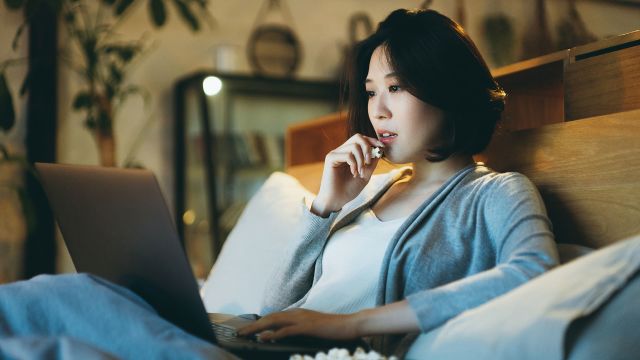Updated on January 29, 2025.
Whether you saw it on the news or read about it online, you may have heard about the dangers of too much screen time for children. Evidence suggests that spending many hours each day on tablets, computers, televisions, and smartphones may be harmful to their development and well-being.
But excess screen time can affect the health of adults, too. Among other problems, research has linked it to eye strain, headaches, back pain, insomnia, and even social media addiction. Staring at screens can also contribute to a more sedentary lifestyle, worse eating habits—like mindless snacking—and eventually, obesity.
“Imagine eating candy bars,” suggests Michael P. Hayes, PhD, assistant professor of psychiatry and behavioral health at the Penn State Health Milton S. Hershey Medical Center in Hershey, Pennsylvania. “At a certain point, you’d recognize that you’ve had enough candy bars. In so many ways, this is the same. We need a balance of things in our lives.”
When it’s time to take a break from devices, try these simple tips to curb your hours spent.
Make screens less attractive
You may be able to reduce your screen time by making enticing features harder to reach, says Nancy Collier, LCSW, Rev, a psychotherapist and author of The Power of Off: The Mindful Way to Stay Sane in a Virtual World.
For example, she suggests re-organizing your smartphone or tablet, hiding addictive games or social media apps in folders so they’re not just a single click away. If that’s not enough, apps and programs like Freedom and Cold Turkey can block your internet access or cut you off after a certain period of time.
And if all else fails? Delete the biggest time-suckers. Candy Crush will still be there if you find you need it tomorrow.
Schedule breaks
Take time to physically separate yourself from your screens, suggests Hayes, especially if you use them for work. He sets appointments for himself “to pause to get up and move to go outside and get some fresh air.”
If you can’t get outside, Collier recommends taking 15-minute breaks to sit and listen to music or call a friend—anything that interrupts your attention to your device.
Give yourself something else to do
“Technology starts to fragment our sense of self,” says Collier, which is why too much screen time is associated with mental health issues like depression and anxiety. Taking time for tactile activities can break up screen use.
That’s a big part of why jigsaw puzzles are having a moment: They physically engage and distract you without the use of a screen. Other activities Collier suggests:
- Playing cards with real, paper/plastic cards
- Painting or coloring
- Taking a bath while listening to your favorite album
- Taking a walk by yourself or with a friend, or talking to them on the phone without using a screen
Give your eyes a rest
You may not be able to avoid screens entirely, especially if they're part of your job. But that doesn’t mean you need to stare at the screen all the time, Hayes says. When he takes calls, he does it in a room with a window and often turns away from the screen to look outside.
“I can see trees and the sky and the clouds and the birds,” he says. “It’s one way of being able to give myself a little bit of grounding outside of the virtual world.”
Don’t have a room with a window seat available? Try placing flowers or a plant in your work area and looking at it when you need a quick screen break.
Set dedicated news times—and stick to them
Staying informed is important, but watching non-stop news isn’t helpful, says Hayes. And given that cable news stations tend to rehash the same information over and over again, we’re not getting much fresh material from hour to hour. But the format is successful in keeping us glued to the screen, he adds, “just feeding into this negative habit.”
Instead of trying to absorb everything that’s available all the time, Hayes recommends setting dedicated times to check in on the news. “Tell yourself ‘I’m going to limit my watching the news to this window of time and these particular outlets and then do something else,’” he says.
And if you find yourself falling back into your screen habits, don’t get mad at yourself. Just try again.







